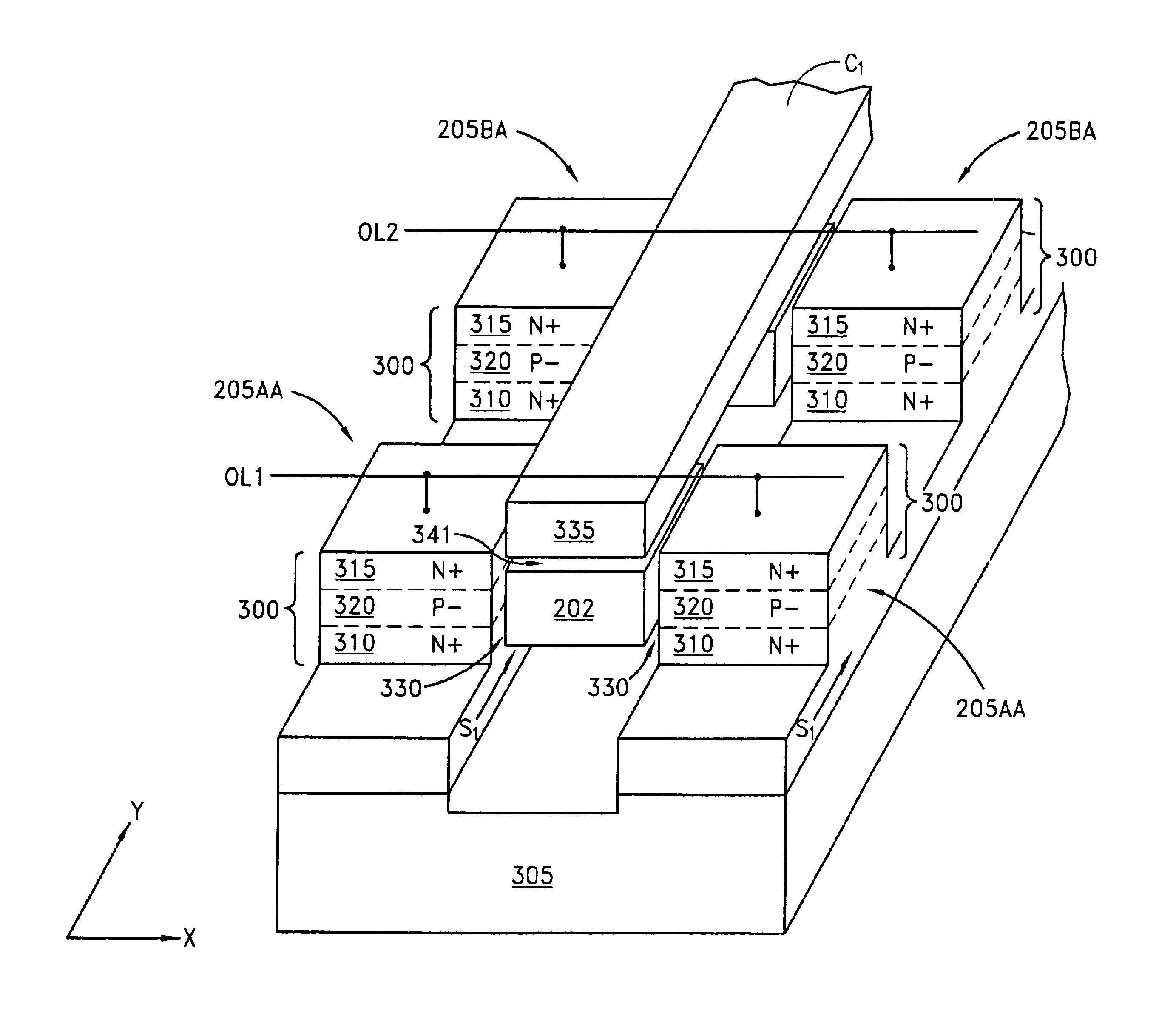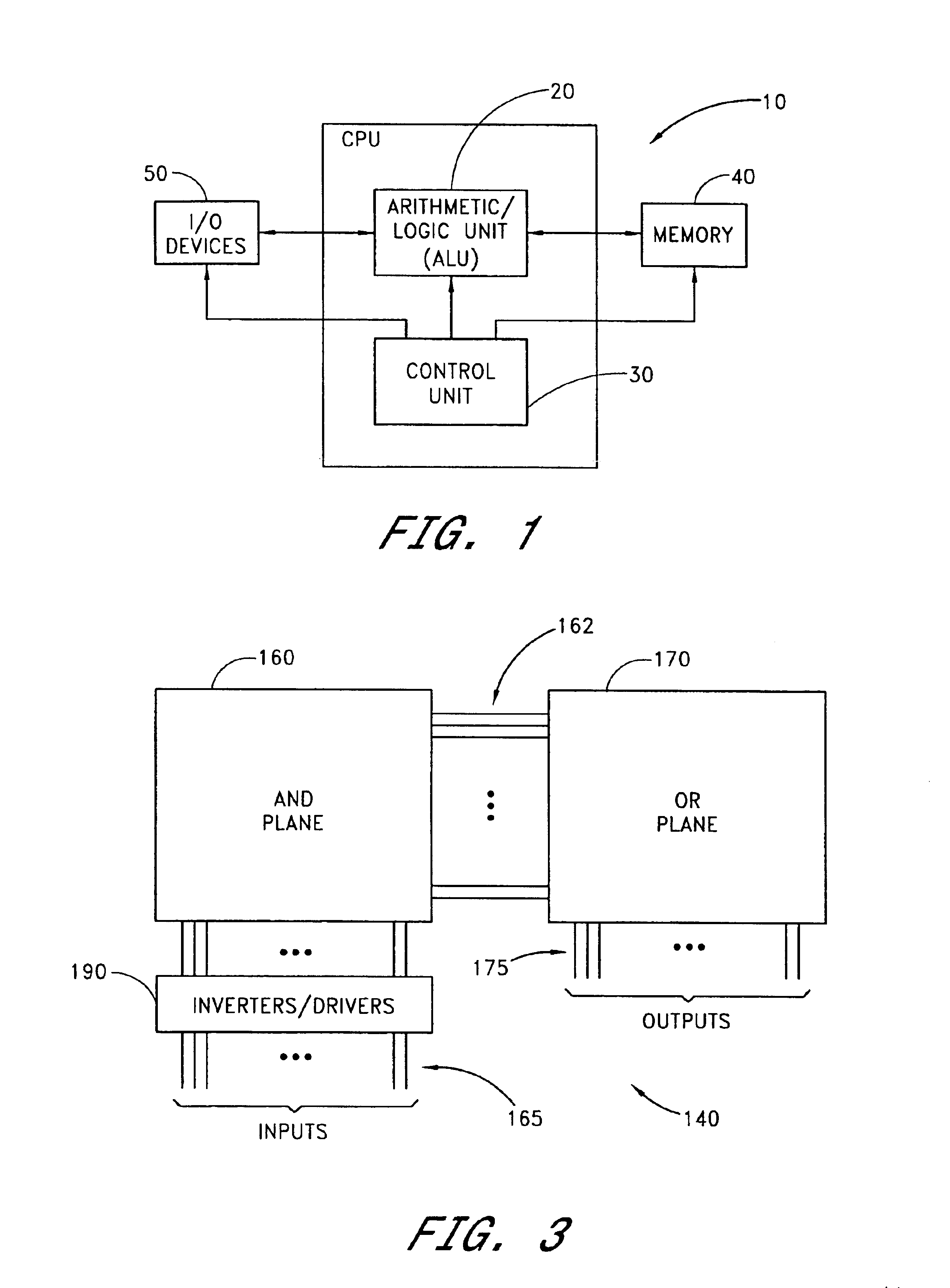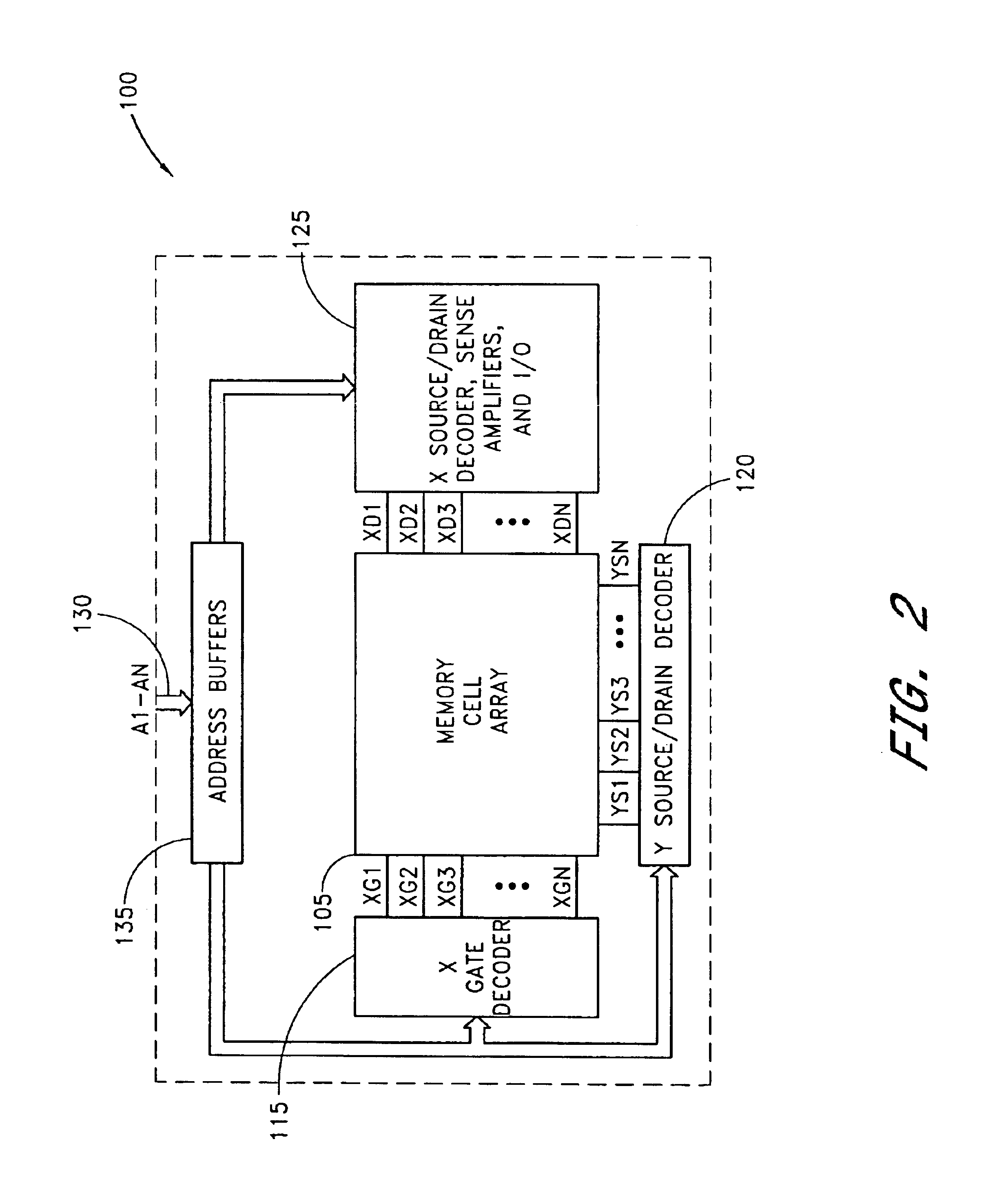Floating gate transistor with horizontal gate layers stacked next to vertical body
a floating gate transistor and horizontal gate technology, applied in the field of integrated circuits, can solve problems such as limiting circuit density
- Summary
- Abstract
- Description
- Claims
- Application Information
AI Technical Summary
Benefits of technology
Problems solved by technology
Method used
Image
Examples
Embodiment Construction
In the following detailed description of the invention, reference is made to the accompanying drawings which form a part thereof, and in which is shown, by way of illustration, specific embodiments in which the invention may be practiced. In the drawings, like numerals describe substantially similar components throughout the several views.
In the following description, the terms wafer and substrate are interchangeably used to refer generally to any structure on which integrated circuits (ICs) are formed, and also to such structures during various stages of integrated circuit fabrication. Both wafer and substrate include doped and undoped semiconductors, epitaxial semiconductor layers supported by a base semiconductor or insulator, combinations of such layers, as well as other semiconductor structures well known to one skilled in the art, including bulk semiconductor and semiconductor-on-insulator (SOI) substrates. The term conductor is understood to include semiconductors, and the te...
PUM
 Login to View More
Login to View More Abstract
Description
Claims
Application Information
 Login to View More
Login to View More - R&D
- Intellectual Property
- Life Sciences
- Materials
- Tech Scout
- Unparalleled Data Quality
- Higher Quality Content
- 60% Fewer Hallucinations
Browse by: Latest US Patents, China's latest patents, Technical Efficacy Thesaurus, Application Domain, Technology Topic, Popular Technical Reports.
© 2025 PatSnap. All rights reserved.Legal|Privacy policy|Modern Slavery Act Transparency Statement|Sitemap|About US| Contact US: help@patsnap.com



